Power and speed—two of aviation’s touchstones—have been pursued as long as there have been airplanes and people willing to throw money at them. Aftermarket designers have hung ever-larger piston engines on factory airframes, with varying levels of success, for decades. By the 1980s mod shops were bolting on turboprops in place of reciprocating engines and achieving impressive speeds, despite the challenges of assuring the airframe could handle the horsepower and juggling the fuel/payload equation on the small airframes.
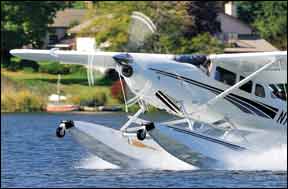
High Power Density
The small size and high power density of turbine engines makes them attractive, as does the increasing difficulty of obtaining avgas outside the U.S. However, there’s no free lunch; jet fuel weighs .7 of a pound per gallon more than avgas. That adds up because turbine engines have higher fuel specifics than piston pounders.
For each horsepower output, the turbine uses more fuel than does a piston engine. The result is that the light weight of turbines is offset by the need to carry more, heavier fuel to achieve reasonable range. This becomes particularly acute in the relatively small, piston-powered airframes, and their correspondingly small wings and fuel tanks, designed for piston fuel consumption specifics.
Generally, until the airframe reaches the size of a TBM 850, it’s difficult to find enough space to carry sufficient fuel to get practical-range out of a turbine-powered airplane with any useful load left for carrying people.
Nevertheless, persistence has paid off and there are now a number of attractive aftermarket, turboprop conversions of piston airplanes. In this report, we’ll look at the better-known ones. The performance data we quote comes from the companies themselves, so we recommend a degree of skepticism. Our experience is that such data can be a trifle optimistic, especially when it comes to cruise speeds and useful loads. We urge prospective buyers to confirm actual empty weights of delivered airplanes, as cabin payload with full fuel is almost always tight on small turboprops.
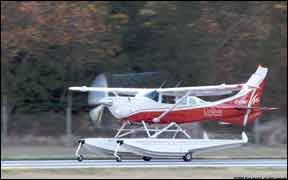
We note that adding significant horsepower to an airplane usually requires beefup to the airframe and examination of flutter margins so it can handle power never intended by the designers. For example, marketing literature from O & N Aircraft Modifications, maker of the Silver Eagle turboprop-modified Cessna 210, clearly describes the structural changes it makes as part of its upgrade to the airframe.
Soloy Aviation
It’s easy to get the impression that Soloy Aviation Solutions has been doing turbine conversions since there were turbine engines. While not quite the case, Soloy has been at it for over 40 years, starting with helicopters. In the 1980s, Soloy branched into converting the Cessna 206 and 207 to turbine power, doing so for both land and seaplanes. The Mark I conversion of the Cessna 206 involves installation of a 420 SHP Rolls Royce 250-C20S turboprop. Engine TBO is 3500 hours.
The conversion can be performed on any version of the 206G (last model with Continental engines), although 1979 and later is preferred due to the 28-volt electrical system and 88-gallon fuel capacity, as we’ll as the 206H series (the Lycoming powered models), excluding those with Garmin G1000 glass panels.
Price for the basic conversion is on the order of $600,000, although we could not get exact details because the price of the engine fluctuates and, when we called Soloy to discuss this article, CEO Dave Stauffer declined to speak with us.
The prop is a full-feathering, non-reversing three-blade Hartzell. Options include a supplemental cabin heater for cold climates, float adapter kit, heavy-duty landing gear and a choice of two aux fuel systems, a 52-gallon Sierra system or 30-gallon Flint tip tank system that also provides a 200-pound gross weight increase. The airplane is approved on amphibious floats.
Gross takeoff weight for the Mark I is 3600 pounds and advertised empty weight is 1908 pounds, giving a useful load of 1692 pounds. Carrying the full 88 gallons of usable jet fuel (590 pounds) means 1102 pounds in the cabin. Not bad for a six-place airplane, although it’s not a fill-the-seats-and-fill-the-tanks machine.
At gross weight on a standard day at sea level, Soloy publishes 1063 feet for takeoff distance over a 50-foot obstacle, which is consistent with our observations. Landing over the same obstacle is published at 1094 feet. Max cruise at 8000 feet is stated as 167 knots while burning 30.5 GPH, giving basic VFR range, with 45-minute reserve, of 350 miles and endurance, with 45-minute reserve of just over two hours. Slowing to piston 206 cruise speed of 139 knots pulls the fuel burn back to 21.4 GPH and bumps the range with 45-minute reserve to 440 miles and endurance, with 45-minute reserve, to 3.4 hours.
At FL200, the max operating altitude for the Mark I, max cruise is 156 knots with fuel flow at 20.4 GPH, generating a VFR range of 620 miles and endurance of 4.1 hours, each with 45-minute reserve. As with almost any turboprop, to get range and endurance, higher is better.
We have observed the Mark I Cessna 206 conversion in use in the U.S., Canada and Central America. We note that props on Soloy Mark I conversions of the 206 have about the same degree of erosion as piston 206s, perhaps due to the relatively low prop RPM of the Soloy installation—max RPM is 1810, and taxi RPM is about 1200.
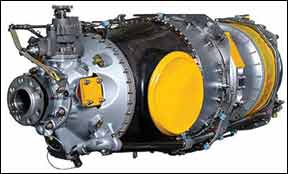
We’ve also observed that a Soloy 206 on takeoff is far quieter than a piston-powered 206, something important as population pressure continues to affect airports and lakes.
Mark II
In October of 2008, Soloy received the STC for the Mark II conversion of the Cessna 206H series. The Mark II mod has a Rolls Royce 250-B17/2 developing 417 SHP for five minutes and 322 SHP continuously. TBO is 3500 hours. Props are full-feathering and reversing and feature a choice of either a three-blade Hartzell or five-blade MT; we are quite interested in the noise footprint of the latter installation, as we suspect it’s low.
This could be especially valuable as Soloy is marketing a version of the airplane with a law enforcement package where the ability for low-noise loitering at reduced power could be valuable and might make inroads into the law enforcement helicopter market.
Max takeoff weight for the Mark II is the same as the Mark I, 3600 pounds, with an advertised useful payload with full fuel (88 gallons usable) of 1085 pounds. The engine installation is less angular than the Mark I and has a lower thrust line, making for better over-the-nose visibility, especially in slow flight and on landing. Soloy specs show a max cruise of 179 knots at 18,000 feet and 170 knots at 10,000 feet with a max VFR range (45-minute reserve) at max cruise at 15,000 feet of 422 miles.
Published price for the conversion is $615,000. It is also available on amphibious floats.
Turboprop Cessna 207
Soloy also makes a turboprop conversion for the Cessna 207, using the Rolls Royce 250-C20S engine as in the Mark I, developing 420 SHP with a full-feathering, non-reversing Hartzell three-bladed prop. As with the Mark I, cruise RPM is 1810. Fuel capacity is less than that of the 206, at 73 gallons usable with an optional 52-gallon aux tank system. Soloy certified its turbine mod 207 on floats as we’ll as wheels. The piston airplane is only certified on wheels.
Max gross weight is 4000 pounds, with Soloy publishing an empty weight with eight seats at 2175 pounds. With full fuel (490 pounds), 1335 pounds can be carried in the cabin. There’s no zero fuel or max landing weight.
Cruise speed at 10,000 feet is published at 160 knots while burning 24 GPH, so range and endurance is limited with standard fuel; VFR, with 45-minute reserve, figure on 350-mile range and two hours endurance at 10,000 feet. From what we can tell from Soloy’s Website, the price for the conversion is similar to that for the 206 conversions.
Rocket Engineering
Rocket Engineering of Spokane, Washington, currently carries out turboprop mods for three series of aircraft with a fourth under development. The modifications fall under separate names; we won’t try to sort out what company owns what other companies, suffice to say that if you go to www.rocketengineering.com, you’ll find further information on all the mods.
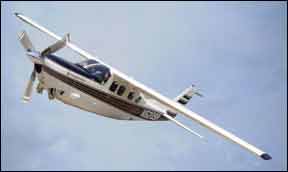
If you’re seeking a cabin-class single that goes high and flies fast, Rocket Engineering converts the Piper Malibu and Mirage to turbine power. Known as the JetPROP DL (economy) and DLX (performance) and equipped with a Pratt & Whitney PT6A-21 (550 HP) and -35 (560 HP) engines, respectively, the JetPROP series, at some 268 airplanes in the field, is currently the most popular general aviation turbine modification after the DeHavilland Beaver and Otter series, which aren’t commonly owner-flown and are beyond the scope of this article.
Published TBO is 3600 hours with the hot section requirement dropped if trend monitoring is used. A four-blade, reversing, full-feathering prop is standard with operating RPM at 2190, reducing flyover noise significantly. The 5.3 PSI pressurization system of the Malibu is retained. At the FL270 max operating altitude, the cabin is at 9500 feet. The fuel system is modified via a purchased STC from the original 120 gallons to carry an additional 10 gallons in each wing, plus a Rocket Engineering-developed 11.5-gallon header tank in the fuselage, which directly feeds the engine. Usable fuel is 151.6 gallons. Gross weight for the DLX is 4300 pounds or 4350 pounds, depending on the model year of the airplane being converted (ramp weight 4318 pounds), with an advertised empty weight of 2950 pounds. Loaded with full fuel, 350 to 400 pounds can be carried in the cabin.
The maximum landing weight is 4100 pounds, so on any gross-weight takeoff, about 30 gallons of fuel has to be burned off before landing. The zero-fuel weight is also 4100 pounds.
Looking at the DL, the economy version of the JetPROP, climbing to FL250 and operating at max cruise power generates a published true airspeed of 231 knots on a fuel burn of 28.4 GPH.
At that power, VFR range with 45-minute reserve is about 1000 miles. Endurance, with 45-minute reserve, is about 4.3 hours. With that kind of range and endurance, fuel can be traded for cabin weight, making a decent compromise as to number of passengers versus distance to travel. Conversion price for the DL is $520,000; for the DLX, $590,000.
Turbine Air
Not one to sit on its laurels, Rocket Engineering doesn’t limit its work to the JetPROP. It also converts Beech B36TC Bonanzas into the Turbine Air via installation of a 500 HP PT6A-21.
At $499,000, the airplane has a published cruise speed of 250 knots at FL250 while burning 29 GPH, according to Rocket Engineering. Filling the 128-gallon fuel system generates a max cruise VFR range, with 45-minute reserve, of about 950 miles and endurance of about 3.9 hours.
Max gross weight is 4021 pounds which, with full fuel on top of an advertised standard empty weight of 2800 pounds, allows 416 pounds to be carried in the cabin.
Royal Turbine
The Royal Turbine is a conversion of the Beech B60 Duke. Two PT6A-35 engines rated at 525 HP are hung on what has long been considered a draggy airframe, turning it into an attractive hotrod.
Thus far, 17 airplanes have been converted to fly at what Rocket shows as a max cruise of 290 knots at FL270. With 45-minute reserve up high, range is about 1000 miles and endurance about 3.5 hours.
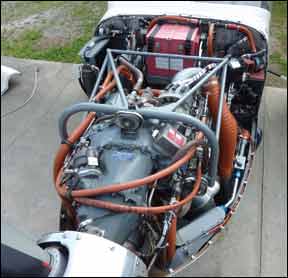
Gross weight is 7050 pounds, max landing weight is 6775 pounds and the published empty weight is 4650 pounds. With a total of 260 gallons aboard, 658 pounds can be carried in the cabin. Cost of the conversion is $980,000.
Turbine Cougar Baron
Finally, Rocket Engineering is flying a prototype pressurized Baron conversion it refers to as the Turbine Cougar Baron. It has PT6A-21 engines rated at 500 hp. The company is reporting a max cruise speed on the order of 300 knots. The conversion is currently priced at $895,000 with certification targeted for the spring of 2013.
O & N Aircraft
By installing a 450-HP Rolls Royce 250 B17F/2 in place of a TSIO-520 on a Cessna P210N and making numerous airframe mods, O & N Aircraft Modifications, Inc., in Factoryville, Pennsylvania, created the Silver Eagle. A total of 96 have been delivered.
It keeps the 3.35 PSI max differential pressurization of the P210 and its max operating altitude of FL230. The standard conversion includes a 26.8-gallon fuel tank in the baggage compartment on top of the standard 90 gallons in the wings, giving 116.8 gallons of fuel. According to the O&N folks, most owners also opt for Flint tip tanks, adding 32.5 gallons of fuel, for a total usable of 148 gallons.
Gross weight is 4000 pounds; our test flight in 2010 showed an empty weight of 2699 pounds. With full standard tanks (no tips), 524 pounds can be carried in the cabin. With the optional Flint tip tanks full, cabin load is 310 pounds. O&N advertises a max cruise for the Silver Eagle of about 220 knots at FL220 while burning 22 GPH. During our flight test we observed 180 to 190 knots at 17,500 feet. With 45-minute reserve at max cruise with standard fuel, VFR range is about 850 miles; endurance about 3.9 hours.
Using the optional Flint tip tanks, figure on a 45-minute reserve VFR range of 1175 miles and 5.6 hours endurance, at max cruise. Price to convert an existing P210N is $839,500 and includes an astonishing amount of work on the aircraft beyond the engine installation, such as a Garmin 600 package for the flight deck; new wiring throughout the aircraft; new, heavier horizontal and vertical stabilizer mounts; dual elevator trim tabs; air conditioning and new interior. O&N provides a one-year warranty on all parts they touch in the airframe, with two years on the engine and avionics.
Silver Eagle II
O & N recently obtained an STC to carry out its Silver Eagle conversion on non-pressurized Cessna 210s. O&N advertises a 215-knots cruise at 16,000 feet and a range of 900 miles. While the conversion is similar to a pressurized airframe, total usable fuel is less, 106 gallons and empty weights are lower because the airframe is not pressurized. With the 4000 pound gross weight, about 750 pounds can be carried in the cabin with full fuel, a respectable load.
Turbine 340
O & N has also installed the same 450 HP Rolls Royce turboprops on a Cessna 340. After four years of work, the STC was obtained in August 2012. The first airplane has been delivered. At press time, all we know is that the fuel system holds 252 gallons and the price of the conversion, if you provide the airplane, is $1.5 million.
Conclusion
Turboprop conversions are not cheap. Despite turbine engines being significantly lighter than the piston mills they replace, the grim realities of higher specific fuel consumption and heavier fuel mean that the modifiers face a tough task in both finding space to carry sufficient fuel for any kind of range while still being able to carry anything in the cabin.
We like what we see. While we sometimes agonize over range and useful load, each of these airplanes has a reasonable tradeoff between cabin load and endurance. Plus we consider the sheer ability to get up and out because of the extra horsepower to be a significant safety factor.
For those who fly regularly where the avgas supply is iffy or who want a big performance bump and turbine reliability in an airframe that is as familiar as an old boot, these mods are worth serious consideration.


